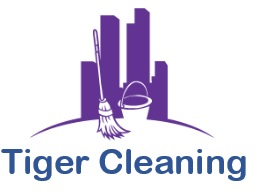Is your warehouse looking a bit cluttered and dusty? It’s time to roll up your sleeves and give it a thorough deep cleaning! A clean and organized warehouse not only improves efficiency but also ensures a safe and welcoming environment for your employees. In this step-by-step guide, we will walk you through the process of deep cleaning your warehouse, from decluttering to shining floors.
Table of Contents
- Introduction
- Gathering Your Cleaning Supplies
- Creating a Cleaning Plan
- Decluttering for a Fresh Start
- Dusting and Cobweb Removal
- Cleaning High and Low: Shelves and Floors
- Scrubbing and Disinfecting Surfaces
- Handling Tough Stains and Spills
- Paying Attention to Restrooms
- Ensuring Ventilation and Lighting
- Don’t Forget the Exterior
- Proper Waste Disposal
- Final Touches and Inspection
- Benefits of a Clean Warehouse
- Conclusion
- FAQs
Introduction
Maintaining a clean and organized warehouse is crucial for efficient operations and the safety of your staff. Regular cleaning not only enhances the overall aesthetic but also prolongs the lifespan of your equipment and inventory.
Gathering Your Cleaning Supplies
Before you begin, ensure you have all the necessary cleaning supplies, including brooms, mops, cleaning agents, disinfectants, microfiber cloths, trash bags, and safety gear.
Creating a Cleaning Plan
Plan the cleaning process meticulously, breaking it down into tasks that can be tackled systematically. Assign responsibilities to your team members to ensure efficiency.
Decluttering for a Fresh Start
Start by decluttering the warehouse. Remove items that are no longer needed or are taking up valuable space. Consider donating or selling items that are in good condition but are surplus to your requirements.
Dusting and Cobweb Removal
Dust all surfaces, including shelves, racks, and equipment. Don’t forget to remove cobwebs from corners and high spaces. Dust accumulation can affect air quality and lead to allergies.
Cleaning High and Low: Shelves and Floors
Clean shelves and racks thoroughly. Wipe them down with appropriate cleaning solutions. Move on to the floors, sweeping away debris and dirt. Depending on the type of flooring, you might need to mop or vacuum as well.
Scrubbing and Disinfecting Surfaces
Scrub surfaces that are in frequent contact, such as doorknobs, handles, and workstations. Disinfect these areas to prevent the spread of germs, especially in times of health concerns.
Handling Tough Stains and Spills
Tackle tough stains and spills promptly. Use suitable stain removers and cleaning techniques to ensure your warehouse maintains a clean and professional appearance.
Paying Attention to Restrooms
If your warehouse has restrooms, give them extra attention. Thoroughly clean and disinfect toilets, sinks, and mirrors. Restrooms are high-traffic areas that require consistent maintenance.
Ensuring Ventilation and Lighting
Check that your warehouse has proper ventilation and lighting. Clean air vents and replace filters if necessary. Well-lit spaces are safer and more inviting.
Don’t Forget the Exterior
If your warehouse has an exterior, pay attention to its cleanliness as well. This includes the parking lot, loading docks, and any outdoor storage areas.
Proper Waste Disposal
Dispose of waste properly. Have designated areas for different types of waste, including recyclables and hazardous materials.
Final Touches and Inspection
Before wrapping up, give your warehouse a final once-over. Check for any missed spots and ensure that everything is in its designated place.
Benefits of a Clean Warehouse
-
Enhanced Productivity:
-
- A tidy and well-organised warehouse facilitates smoother operations. Employees can locate items quickly, leading to reduced search times and increased efficiency. With less clutter to navigate through, tasks are completed more swiftly.
-
Improved Employee Morale:
-
- A clean and orderly environment fosters a positive atmosphere. When employees work in a space that’s free from dirt and mess, they’re more likely to feel motivated and take pride in their workplace. High morale can lead to better job satisfaction and lower turnover rates.
-
Safety First:
-
- Cluttered and dirty warehouses can pose serious safety hazards. Tripping over objects, accidents caused by poor visibility, and even the risk of fire due to accumulation of dust are all concerns in a neglected warehouse. Regular cleaning minimizes these risks, ensuring the safety of employees and assets.
-
Better Inventory Management:
-
- A clean warehouse makes inventory management more effective. Items are easier to locate, reducing the chances of overstocking or running out of essential items. Accurate inventory records and better tracking contribute to improved supply chain management.
-
Compliance and Regulation:
-
- Many industries have strict regulations regarding cleanliness and hygiene. A well-maintained warehouse helps you stay compliant with these regulations, avoiding potential legal issues and penalties.
-
Enhanced Equipment Longevity:
-
- Dust and dirt can take a toll on machinery and equipment. Regular cleaning prevents the buildup of debris that could lead to equipment malfunctions or breakdowns. This extends the lifespan of your valuable assets, saving you money in the long run.
-
Positive Customer Perception:
-
- If clients or customers visit your warehouse, a clean and organised space reflects professionalism and attention to detail. It instils confidence in your business and can even contribute to better business relationships.
-
Optimised Space Utilisation:
-
- An orderly warehouse maximises the use of available space. With items stored properly and efficiently, you can make the most of your square footage, potentially reducing the need for expansion.
-
Ease of Maintenance:
-
- Regular cleaning means that routine maintenance tasks become more manageable. By addressing minor issues promptly, you prevent them from escalating into major problems that could disrupt operations.
- Reduced Pest Infestations: Clutter and debris can attract pests like rodents and insects. These unwanted visitors can damage inventory and compromise the overall cleanliness of your warehouse. A clean space is less inviting to pests.
-
Healthier Work Environment:
-
- A clean warehouse contributes to a healthier indoor environment. Dust and allergens are minimised, reducing the risk of respiratory issues among employees.
-
Streamlined Audits and Inspections:
-
- If your warehouse undergoes audits or inspections, a clean environment makes the process smoother. Auditors can focus on evaluating processes and records rather than getting distracted by a messy setting.
-
Environmental Responsibility:
- A commitment to cleanliness often goes hand in hand with sustainable practices. By properly managing waste and using eco-friendly cleaning products, you contribute to a greener planet.
Conclusion
Deep cleaning your warehouse might be a labour-intensive task, but the results are undoubtedly worth it. A clean and organised warehouse sets the stage for a successful and efficient business operation.
FAQs
Q1: How often should I deep clean my warehouse?
A: The frequency of deep cleaning depends on the size and type of your warehouse. Generally, aim for at least once a quarter.
Q2: Can I use regular cleaning products for tough stains?
A: It’s best to use industrial-strength cleaners for tough stains in warehouses. Consult with professionals if needed.
Q3: Should I involve my employees in the cleaning process?
A: Yes, involving employees not only speeds up the process but also fosters a sense of ownership and teamwork.
Q4: Are there eco-friendly cleaning options?
A: Absolutely! There are many environmentally friendly cleaning products available that are effective and safe for your warehouse.
Q5: What’s the best way to maintain cleanliness after deep cleaning?
A: Implement a regular cleaning schedule for daily maintenance tasks, and conduct periodic deep cleaning sessions as outlined in this guide.

